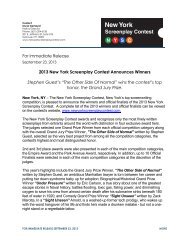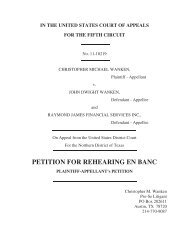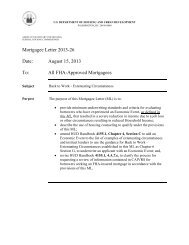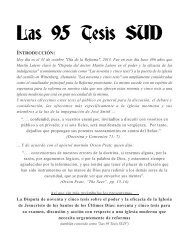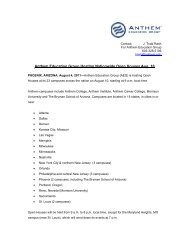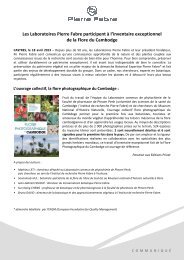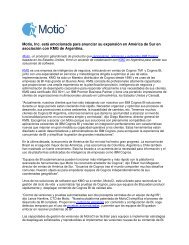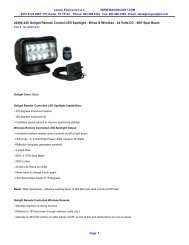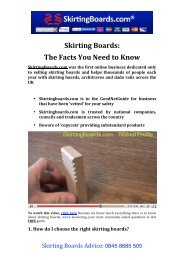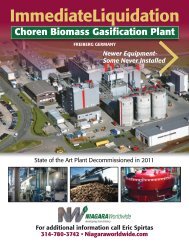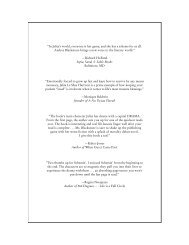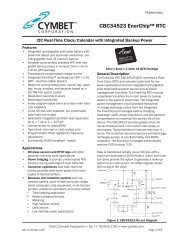Clinical & Scientific Documentation - PRWeb
Clinical & Scientific Documentation - PRWeb
Clinical & Scientific Documentation - PRWeb
You also want an ePaper? Increase the reach of your titles
YUMPU automatically turns print PDFs into web optimized ePapers that Google loves.
Indications<br />
BruxZir Solid Zirconia is indicated for crowns, bridges, veneers,<br />
inlays and onlays. It is an esthetic alternative to PFM<br />
metal occlusal/lingual or full-cast restorations and ideal for<br />
restorations requiring extra durability such as crowns under<br />
partials or screw-retained implant crowns. The chip-proof<br />
durability of BruxZir restorations also makes them ideal for<br />
bruxers who have broken natural teeth or previous PFM<br />
restorations. BruxZir restorations are also ideal for patients<br />
lacking the preparation space for a PFM.<br />
Preparation Requirements<br />
• Shoulder preparation not needed, feather edge is OK. It is a conservative preparation similar to full-cast gold, so any<br />
preparation with at least 0.5 mm of occlusal space is accepted.<br />
• Minimum occlusal reduction of 0.5 mm; 1 mm is ideal.<br />
1 mm axial<br />
reduction<br />
Typical Prep with PFM Crown<br />
Cementation Recommendations<br />
1 mm occlusal<br />
reduction<br />
This image represents the typical<br />
PFM prep we receive with a conservative<br />
feather-edge margin.<br />
When a PFM is fabricated for this<br />
prep, there is a bulky 1 mm margin<br />
on the PFM that catches on<br />
the explorer. Even if the margin is<br />
sealed, the emergence profile is<br />
unacceptable.<br />
Feather-edge<br />
margin acceptable<br />
1 mm lingual<br />
reduction<br />
1 mm incisal<br />
reduction<br />
These illustrations show an ideal 1 mm reduction for an anterior or posterior BruxZir crown, and also have feather-edge margins. BruxZir does fine at<br />
1.5 or 2.0 mm as well, but this amount of reduction is not always possible. By maintaining 1 mm of BruxZir thickness, this allows you to safely adjust<br />
the crown if necessary when checking the occlusion. While BruxZir can be milled as thin as 0.5 mm, it cannot be adjusted at this thickness without<br />
breaking at some point. With a BruxZir crown at 0.5 mm thickness with high occlusion, consider adjusting the opposing tooth.<br />
Typical Prep with BruxZir Crown<br />
1 mm facial<br />
reduction<br />
This image represents the typical<br />
PFM prep we receive with a<br />
BruxZir crown in place. Because<br />
it is a monolithic crown and can<br />
be milled to a feather edge, there<br />
is no bulk of material, or “speed<br />
bump,” at the margin. Dentists<br />
tell us their explorer cannot<br />
detect where the tooth ends and<br />
the BruxZir crown begins.<br />
• Ceramir ® Crown & Bridge (Doxa Dental; Newport Beach, Calif.) or a resin-reinforced glass ionomer cement such as<br />
RelyX Luting Cement (3M ESPE; St. Paul, Minn.) or GC Fuji Plus (GC America; Alsip; Ill.) with Z-Prime Plus or Monobond<br />
Plus<br />
• For short or over-tapered preparations, use a resin cement such as RelyX Unicem (3M ESPE) or Panavia F2.0 (Kuraray;<br />
New York, N.Y.) with Z-Prime Plus or Monobond Plus



